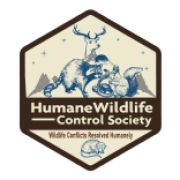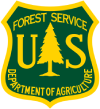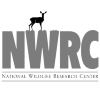Humane Wildlife Control in Tampa, FL
The Humane Wildlife Control Society recommends non-invasive solutions to resolve human-wildlife conflicts. This includes:
Determining if the issue needs to be addressed at all
Opting for preventative measures first
Opting for wildlife exclusion as opposed to trapping
If trapping is the only way to solve the problem do so humanely
The Humane Wildlife Control Society screens candidates prior to recommendation. Our process requires any company we recommend to meet the following criteria:
Is properly licensed in Florida for wildlife control
Carries appropriate business licenses and insurance
Complies with all Florida laws and regulations for wildlife control
Adheres to the humane principles listed above.
In Tampa, Florida we recommend Humane Wildlife Removal Tampa for professional wildlife control services. This is a private company that charges for their services.
Contact Information:
Wildlife Removal Tampa
813-358-5543
If you have any wildlife issues that can be handled by the state government agency for free, the Florida Wildlife Commission can help.
State Contact Information: 888-404-3922
The State Department of Agriculture may also be able to address your wildlife problem for no charge.
USDA Contact Information: (800) 435-7352
Wildlife Conflict Mitigation in Tampa, Florida Tampa, Florida, is a city surrounded by diverse ecosystems, home to a variety of wildlife such as raccoons, opossums, squirrels, snakes, and birds. As urban development continues to expand, interactions between humans and wildlife have become more frequent, sometimes leading to conflicts. The City of Tampa is committed to promoting effective and ethical wildlife conflict mitigation strategies that prioritize the well-being of both residents and animals while preserving the ecological balance of our region. What is Wildlife Conflict Mitigation? Common Wildlife Issues in Tampa Raccoons: Known for rummaging through garbage or seeking shelter in attics and crawl spaces. Opossums: Often found in yards or under decks, sometimes causing minor disturbances. Squirrels: May chew on wires or nest in chimneys, posing fire hazards or structural damage. Snakes: Including non-venomous and venomous species, which can be dangerous if encountered near homes. Birds: Pigeons, starlings, and other birds may nest in vents or eaves, leading to noise or blockages. Principles of Wildlife Conflict Mitigation Prevention: The most effective way to manage wildlife conflicts is to prevent them. Secure trash bins, remove outdoor food sources, and seal potential entry points to your home, such as gaps in roofs, vents, or foundations. Exclusion: Use humane exclusion methods to keep wildlife out. Install barriers like chimney caps, mesh screens, or fencing to prevent animals from entering your property. Habitat Modification: Reduce the likelihood of wildlife encounters by removing potential shelters, such as woodpiles or dense vegetation, and using deterrents like motion-activated lights or sprinklers. Non-Lethal Removal: If wildlife has already entered your property, consider using live traps to capture and relocate the animal. Always follow local regulations and consult professionals to ensure the animal’s safety and survival. Professional Assistance: For complex situations, contact licensed wildlife control professionals who specialize in humane methods. These experts can safely resolve conflicts and provide guidance on preventing future issues. Why Wildlife Conflict Mitigation Matters Ethical Responsibility: Treating wildlife with compassion and respect reflects our commitment to preserving life and biodiversity. Ecological Balance: Wildlife plays a critical role in maintaining healthy ecosystems. Mitigation practices help protect these natural processes. Public Safety: By addressing the root causes of conflicts, mitigation methods reduce the risk of repeated issues, ensuring long-term safety for both people and animals. Legal Compliance: Many wildlife species are protected by local and federal laws. Mitigation methods ensure compliance with these regulations. Our Commitment to Tampa How You Can Help Educate yourself and others about local wildlife and conflict mitigation methods. Secure your property to prevent attracting animals. Support local wildlife rehabilitation centers and conservation efforts. Report injured or orphaned wildlife to licensed professionals for care.
Wildlife conflict mitigation focuses on resolving conflicts with wildlife in a way that minimizes harm to animals and respects their role in the environment. This approach emphasizes non-lethal methods, such as prevention, exclusion, and habitat modification, to address issues effectively and compassionately. By using these techniques, we can coexist with wildlife while protecting public health and safety.
Tampa’s unique blend of urban and natural environments often leads to encounters with wildlife such as:
The City of Tampa encourages residents to address wildlife conflicts using the following strategies:
Wildlife conflict mitigation is not only an ethical choice but also a practical one. Here’s why it is essential:
The City of Tampa is dedicated to fostering a community where humans and wildlife can coexist harmoniously. Through education, resources, and partnerships with local organizations, we aim to promote wildlife conflict mitigation practices that protect both residents and animals.
Responsible wildlife management requires community involvement. Here’s how you can contribute:







